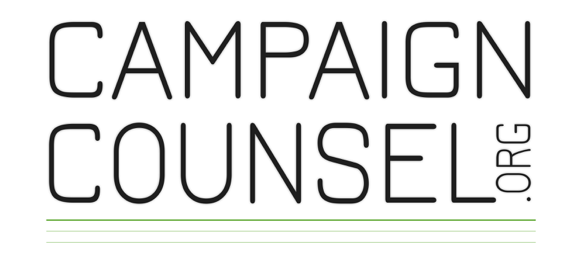Case for Support: Use it to Drive all Your Fundraising Efforts
Every nonprofit can benefit from the development of a case for support. While it’s a vital part of every capital campaign, this purposeful process of gathering ideas, evidence, and arguments for a particular fundraising project or for your nonprofit in general will help you to establish compelling reasons for donors to give to your organization and solidify your importance in serving your community.
What is a Case for Support?
A case for support is an internal document. The long and authoritative piece is the foundation for communication efforts to follow that will move people to give to your organization. It is detailed, researched and designed to house all the information and evidence you need to make your case through your other external communications vehicles. From it you will draw the information needed for brochures, slide decks and websites. It should clearly communicate the needs of your nonprofit and demonstrate how filling those needs will ultimately benefit your community.
We compare a nonprofit’s case for support to an investment strategy that beautifully outlines the potential donor’s return on investment. A good investment strategy doesn’t focus merely on the needs of the company. Rather, it focuses on how investing in the company will benefit the investor. With its clear and compelling set of concepts, the document holds all the elements needed to make the case for investment by a donor and shows specifically how investing in the nonprofit will bring returns for the philanthropist’s community.
The very best cases for support weave together the image of the nonprofit, its role in the community, and how fulfilling that role benefits its users and the community.
Building a Case for Support: Where Do You Start?
Enlist internal staff, community leaders and donors to help develop your case for support through a sharing of ideas. Cases for support are often generated during a capital campaign feasibility study. During a study, donors and community leaders are asked for their perspectives on the organization and its project. This allows the organization to gather information from the potential donor’s perspective. What is important to them about your organization? What resonates with them about your services in the community? How do they see your organization benefiting the area? If you only have the internal perspective, you may miss out on those points that most impact your community and your donors.
Through the study, a nonprofit should solidify its image, its role in the community and how it benefits the community. These elements all become key parts of the case for support for the specific capital campaign project.
If you are developing a general case for support outside of a feasibility study, consider interviewing some of your most engaged donors and volunteers to uncover their views on your leadership, your mission, your services and why they support you. Gather all historical organization and program data, funding priorities, cost estimates, strategic plans, and mission and vision statements – anything that will add evidence and shape your case.
Gather about 10 to 15 people from inside and outside the organization who will help provide input. Ask questions that gather both internal and external views from this group. From that group choose three to five people who you can count on to work closely with you during the writing process. Plan for multiple drafts and revisions with your small group and a round or two with your larger group as the process plays out. Plan to share the case you develop with your greater leadership group as well to build buy-in across the organization.
Think About Need Versus Benefit in your Case for Support
Once you’ve gathered your group, it will be important for them to consider the needs and benefits of your particular project or your organization. Following are examples of how needs and benefits interact within a case.
We had a client in Kentucky with a serious problem: an ice storm in late spring fell a tree onto a housing unit for at-risk teenage girls. The house was destroyed. Thank goodness no one was hurt but rebuilding the house would cost more than $2 million.
Right around the same time, a nonprofit home healthcare agency in New Mexico approached us. The executive director and her board were losing market share to for-profit agencies; they wanted to diversify their offerings. Their community didn’t have a dedicated hospice house. People who needed inpatient hospice care had to make a one-hour drive down a two-lane mountain road. The director wanted to build a six-bed hospice house that would cost over $3 million.
Both organizations had needs that could be quantified. In Kentucky, an ice storm left 30 young women sleeping on cots in the gym. These ladies had horrific pasts – abandonment, sexual and physical abuse, drug addiction – and now they had lost the one home that made them feel safe. In New Mexico, the lack of a hospice house meant turning away multiple patients every year who needed inpatient care.
In Kentucky, our case for support focused on helping these young women become happy and productive. In New Mexico, we were ensuring that terminally ill patients and their loved ones had positive end-of-life experiences. These benefits drove the cases for support and are what drove these campaigns to successful completion, rather than the specific needs of a new roof or a new structure. We helped each organization construct a case for support that showed the potential donor (the investor) how his/her gift (investment) would help the community (ROI).
Elements of a Case for Support
A case for support for a capital campaign is a long, internal document that touches on all the pertinent elements of a capital appeal. It can do the same as a general case statement for a nonprofit looking to organize its communications and fundraising efforts.
A thorough capital campaign case for support blends internal and external interview findings with nonprofit data and includes these elements:
Overview: A brief historic overview of the nonprofit. When did it open? Who does it serve? How does it benefit the community? Accolades and information.
Mission and Vision
Administration and Board of Directors
Challenge/Current Situation: What operating, programmatic or infrastructure shortfall brought about the nonprofit’s desire to seek capital? Use data to illustrate the scope of the problem. This is the nonprofit’s “Need.”
Opportunity/Solution to Current Situation: How will you resolve the issue or issues? If this is a general case for support, include information on each of your programs and their impact. Once the capital is raised, how will the nonprofit’s users and the service region benefit? This is the “Benefit.”
Project Budget and Business Plan: The Business Plan is needed if staffing and/or expenses are increasing. This shows financial readiness or break-even point.
Project Timeline: When will the project begin/end, including time for fundraising.
Summary: A blending of overview, challenge and opportunity that summarizes the needs and benefits of reaching the capital goal. Why does this project matter? Focus here more on benefits; donors give more to solutions rather than challenges.
Case for Support Tone
A case for support can be written in first or third person, although writing in third person gives it a more objective tone. Many nonprofits err in focusing too much of their case on emotion. The communications that stem from the case for support may take a more emotional tone, but the case is focused on investment. The donor’s return on investment is in helping a nonprofit to realize a solution. Use emotion to get their attention, but use facts and figures to get them to invest.
Again, the case for support is not intended to be a stand-alone, external document. Rather, it provides the building blocks for newsletters, brochures, grant requests and video scripts. Think of it as a depot of information that can be pulled from depending upon the nonprofit’s need. For example, if the nonprofit needs to write a grant request, the information from the case for support can be cut-and-pasted into the request with the foundation’s areas of interest woven into the response.
Refine your case for support through multiple drafts shared with the team you enlisted to help develop it, your board and your key stakeholders. Incorporate their language and perspectives to help your case hit home with the widest audience. Use the process to build buy in, vision and excitement. And don’t create it and let it sit on a shelf. Revisit and revise as your organization changes and grows.
Bringing it All Together
The case for support should answer many questions for you, your team and for your eventual audience. What are you raising money for? If you’re successful in raising the funds, what will your greater impact be? How will that improve your community?
Through the process, you will define your purpose and objectives, establish clear vision for your organization, and build excitement and buy-in with internal and external constituencies.
With this centralized set of ideas, language and evidence for your organization, you will be equipped to communicate in an organized and thoughtful way.
Do you need a case for support example to get you started? Here’s one for a library capital campaign and a healthcare campaign.
Melissa Sais is a vice president and partner with CampaignCounsel.org.







